
Somme is a department of France, located in the north of the country and named after the Somme river. It is part of the Hauts-de-France region.
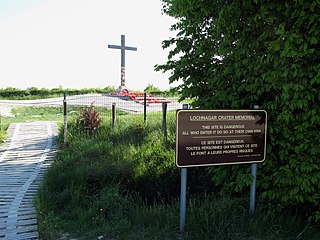
Ovillers-la-Boisselle is a commune in the Somme department in Hauts-de-France in northern France.

The Battle of Albert is the British name for the first two weeks of British–French offensive operations of the Battle of the Somme. The Allied preparatory artillery bombardment commenced on 24 June and the British–French infantry attacked on 1 July, on the south bank from Foucaucourt to the Somme and from the Somme north to Gommecourt, 2 mi (3.2 km) beyond Serre. The French Sixth Army and the right wing of the British Fourth Army inflicted a considerable defeat on the German 2nd Army but from near the Albert–Bapaume road to Gommecourt, the British attack was a disaster, where most of the c. 57,000 British casualties of the day were incurred. Against the wishes of General Joseph Joffre, General Sir Douglas Haig abandoned the offensive north of the road to reinforce the success in the south, where the British–French forces pressed forward through several intermediate lines closer to the German second position.

Havrincourt is a commune in the Pas-de-Calais department in Hauts-de-France in France. The inhabitants are called Havrincourtois.
The Mametz Wood Memorial commemorates an engagement of the 38th (Welsh) Division of the British Army during the First Battle of the Somme in France in 1916.
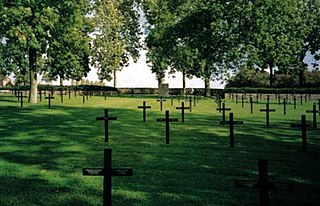
Fricourt is a commune in the Somme department in Hauts-de-France in northern France.

Bray-sur-Somme is a commune in the Somme department in Hauts-de-France in northern France.

Carnoy is a former commune in the Somme department in Hauts-de-France in northern France. On 1 January 2019, it was merged into the new commune Carnoy-Mametz.
The Canton of Albert is a canton situated in the department of the Somme and in the Hauts-de-France region of northern France.

Fricourt is a village that was fought over in July 1916, during the Battle of the Somme, which took place in France during the First World War. Fricourt is 3 mi (4.8 km) from Albert, north of Bray and west of Mametz, near the D 938 road and at the junction of the D 147 with the D 64. The village is 20 mi (32 km) north-east of Amiens and on the route of the Albert–Péronne light railway. Fricourt Wood was north-east of the village, with a château on the edge of the village and a number of craters, known as the Tambour on the west side. Fricourt formed a salient in the German front-line and was the principal German fortified village between the River Somme and the Ancre.

The Capture of Montauban, took place on 1 July 1916, the first day of the Battle of the Somme, between the British Fourth Army and the French Sixth Army against the German 2nd Army, on the Western Front, during the First World War. Montauban is a commune in the Somme départment in Picardy in northern France and lies on the D 64, between Guillemont to the east and Mametz to the west. To the north are Bazentin-le-Petit and Bazentin-le-Grand. Bernafay and Trônes woods are to the north-east and Maricourt lies to the south.

The Capture of Mametz took place on 1 July 1916, when the British Fourth Army attacked the German 2nd Army on the Western Front, during the first day of the Battle of the Somme. Mametz is a village on the D 64 road, about 20 mi (32 km) north-east of Amiens and 4 mi (6.4 km) east of Albert. Fricourt lies to the west, Contalmaison is to the north, Montauban to the north-east and Carnoy and Maricourt are to the south-east. Mametz Wood is 1,000 yd (910 m) to the north-west and before 1914, the village was the fifth largest in the area, with about 120 houses and had a station on the line from Albert to Péronne. During the Battle of Albert (25 to 29 September) 1914 the II Bavarian Corps attacked westwards north of the Somme but was fought to a standstill east of Mametz. Reinforced by the XIV Reserve Corps the Germans on the north side of the Somme attacked again and took Mametz on 29 September. After a mutually costly battle for Fricourt, where the French were eventually forced out, the front line stabilised and both sides began to dig improvised defences. In mid-December the French conducted a local attack in the Mametz area but were repulsed with many casualties.
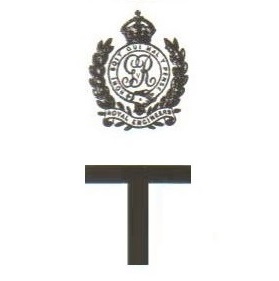
The 174th Tunnelling Company was one of the tunnelling companies of the Royal Engineers created by the British Army during World War I. The tunnelling units were occupied in offensive and defensive mining involving the placing and maintaining of mines under enemy lines, as well as other underground work such as the construction of deep dugouts for troop accommodation, the digging of subways, saps, cable trenches and underground chambers for signals and medical services.

The 183rd Tunnelling Company was one of the tunnelling companies of the Royal Engineers created by the British Army during World War I. The tunnelling units were occupied in offensive and defensive mining involving the placing and maintaining of mines under enemy lines, as well as other underground work such as the construction of deep dugouts for troop accommodation, the digging of subways, saps, cable trenches and underground chambers for signals and medical services.
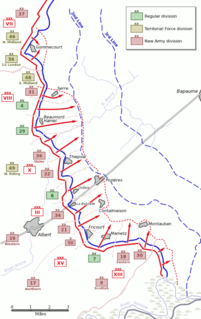
The 19 mines on the first day of the Somme comprised a series of underground explosive charges, secretly planted by British tunnelling units beneath the German front lines on the Western Front during the First World War, ready to be detonated in the morning of Saturday 1 July 1916, the first day of the Battle of the Somme. The joint explosion of these mines ranks among the largest artificial non-nuclear explosions.
L'îlot de La Boisselle is a small, 3.12-hectare (7.7-acre) historic site in the commune of Ovillers-la-Boisselle in the Somme department in Picardie in northern France. L'îlot was heavily fought over during the First World War, when it was known as Granathof to the Germans and as Glory Hole to British soldiers. The site is private property and open to the public by appointment with Claudie LLewellyn.

In World War I, the small commune of Ovillers-la-Boisselle, located some 22 miles (35 km) north-east of Amiens in the Somme department in Hauts-de-France in northern France, was the site of intense and sustained fighting between German and Allied forces. Between 1914 and 1916, the Western Front ran through the commune, and the villages were completely destroyed. After the Armistice of 11 November 1918, the former inhabitants returned and gradually rebuilt most of the infrastructure as it had been before the war.

Carnoy-Mametz is a commune in the Somme department in Hauts-de-France in northern France. It was established on 1 January 2019 by merger of the former communes of Mametz and Carnoy.

Dantzig Alley British Cemetery is a Commonwealth War Graves Commission burial ground for the dead of the First World War. It is located near the village of Mametz, eight kilometres from Albert in the Somme department of France.
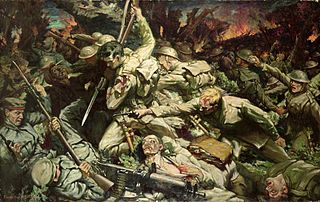
The Welsh at Mametz Wood by Christopher Williams portrays the 11 July 1916 Charge of the Welsh Division at Mametz Wood, part of the Somme offensive. Painted at the request of the Secretary of State for War, David Lloyd George. Williams visited the scene in November 1916 and later made studies from a soldier supplied for the purpose. The painting is in the collection of the National Museum of Wales, to whom it was presented by Sir Archibald Mitchelson in 1920.


















